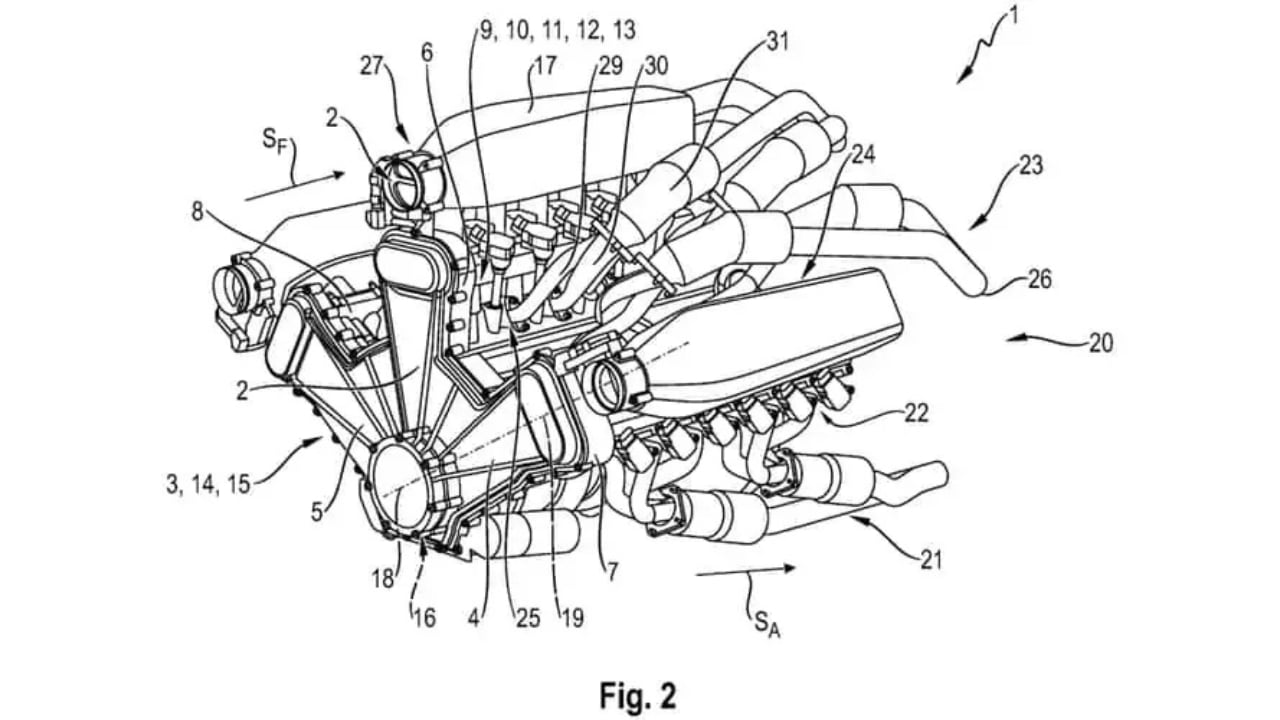The document, filed with the German Patent Office, shows Porsche’s engineers working on what they call a “space-optimised” engine architecture.

View Personalised Offers on
Porsche has never been shy about exploring the edges of engineering possibility. The latest example comes from a new patent filing that reveals a rather unconventional W-shaped combustion engine, one that could, in theory, house as many as 18 cylinders in a compact layout.


The document, filed with the German Patent Office, shows Porsche’s engineers working on what they call a “space-optimised” engine architecture. It’s a bold design that challenges conventional thinking, not a reworked V-layout like Bugatti’s W16, but a genuine W-configuration built around three cylinder banks sharing a common crankshaft.
Also Read : Porsche files new W12 engine patent, but this isn’t a usual 12 cylinder
An 18-cylinder engine the size of a straight-six
In its most extreme version, Porsche’s patent illustrates six cylinders per bank, resulting in an 18-cylinder layout. But the company has left the door open for smaller variations, nine or 15 cylinders, with three banks of three or five respectively.
According to the filing, the engine’s design aims to minimise airflow friction losses and ensure a clear separation between the intake and exhaust systems. This layout keeps intake air cooler, enhancing performance while reducing the thermal influence of exhaust gases. The document even suggests that each bank could support its own turbocharger, implying a triple-turbocharged W-18 that’s no longer than a straight-six.

It’s a fascinating blend of power density and packaging efficiency, something that could have real-world applications beyond concept talk.
A continuation of Porsche’s quiet combustion research
This isn’t the first time Porsche has revisited complex engine geometries. Earlier this year, the company was also linked to a W12 engine patent, featuring a tri-bank structure with an unusual firing order and asymmetric intake design. TThat filing teased the company’s ongoing experimentations with internal combustion breakthroughs, even as its product pipeline became more electrified.
Also Read : Porsche Cayenne Electric goes big on screens: Interior revealed ahead of launch
Taken together, these patents signal that Porsche’s R&D teams aren’t abandoning combustion just yet. While the brand is leading its EV shift through the Taycan and upcoming Macan Electric, it’s also rethinking what the next generation of performance engines might look like in a hybrid era.
Why patents like this still matter
Of course, the W-18 might never leave the drawing board. Car companies routinely file patents to secure intellectual property, rather than preview production intent. Porsche hasn’t disclosed any figures for displacement or power output either. Still, the filing underscores a simple truth, combustion innovation isn’t dead.
Even as Porsche’s future tilts toward electrification, its engineers appear determined to extract the last bit of magic from fossil-fuel engines, just in case the world isn’t ready to let go of them entirely.
Get insights into Upcoming Cars In India, Electric Vehicles, Upcoming Bikes in India and cutting-edge technology transforming the automotive landscape.
First Published Date: 22 Oct 2025, 09:25 am IST







